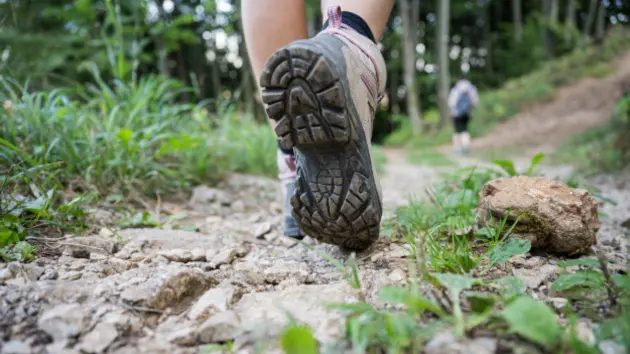
(NEW YORK) — The past few months, several disappearances have occurred involving hikers setting out on multi-day excursions who are never seen again.
On Wednesday, search efforts were called off for a Minnesota man, who was last heard from in late July after planning a three-day hike through Wyoming’s Big Horn National Park.
“With weather conditions and other factors updated in our search models, we have to face the reality that the most optimistic survival odds have run out,” officials said.
Similarly, a New Jersey man has been missing since July 28 after reportedly hiking along one of the most challenging trails in the Grand Canyon, according to the National Park Service. Since the hiker’s disappearance, officials have not provided additional updates on his possible whereabouts or the search efforts.
“The overwhelming percentage of missing hikers and accidents and tragedies we see, I think, are probably preventable,” Cris Hazzard, a professional hiking guide and author, known as as “The Hiking Guy,” told ABC News.
Hazzard said these disappearances usually occur when people either “don’t know what they are getting into” or “they’re not prepared.”
So, here’s what Hazzard recommends the next time a hiker — whether they are a beginner or a frequent visitor of the trails — sets out on their next outdoor adventure.
Several minutes of ‘homework’ before embarking on hike
Before even beginning a hiking trail or camping excursion, Hazzard said the hiker should check the park’s website, ensuring it is open and there are not any warnings in place.
“A lot of times people think, ‘Well, it’s not going to happen to me, I spent all this money to visit the Grand Canyon and you’re not going to take the hike away from me.’ I get it, but you need to take that stuff seriously,” Hazzard said.
Along with checking the individual park’s website, Hazzard recommends the AllTrails app, where other hikers can leave trail reports and see what others have been experiencing on specifics paths.
Be prepared with the proper gear, including satellite communication
When putting together the essential materials for an extended hiking trip, Hazzard said people should ensure they have fitness clothes, a backpack, plenty of water (with electrolytes for warmer hiking conditions) and a rain jacket in case of thunderstorms.
But, Hazzard emphasizes one item that is the most important — an LED flashlight or headlamp.
“Think of a situation of when you’re on a hike and you sprain your ankle halfway through, and there’s a couple hours of daylight. Now you’re hopping back, and if you’re not comfortable hiking, or you don’t know the trail, you could be in the pitch dark, you could get lost and you can get into bigger trouble,” Hazzard said.
Any time issues like that come up, Hazzard said the LED headlamp is “going to bail you out of that.”
Other tools that could prevent tragedies are satellite communication devices that can send an SOS signal to loved ones or to local officials, Hazzard said.
A Garmin Inreach, which is like a “rugged outdoor instrument,” features SOS and non-emergency communication — so hikers can even let family members know when they are running a little behind schedule, Hazzard said.
Additionally, a Personal Locator Beacon (PLB) allows a hiker to broadcast their location to government search and rescue teams with just the push of a button, Hazzard said. This device can share a hiker’s location every 10 minutes via satellite to create a “breadcrumb” trail — making it significantly easier for emergency personnel to find a stranded or injured individual along the trail, Hazzard said.
Not hesitating to ask for help
If a hiker does end up getting lost, Hazzard emphasized people should not try to figure out a solution on their own, but instead reach out for help immediately, even if it’s just calling and asking for directions.
“Time is an asset in rescuing you. [Officials] much rather would know that you need help even if they don’t go out and pick you up with a helicopter, they can at least make sure that you’re safe,” Hazzard told ABC News.
Share hiking plans and estimated time of return with a trusted person
Hazzard does not discourage hiking alone — as that is how he normally travels the trails — but he encourages those who are solo to share hiking plans with others before embarking on their excursions, since that individual could then give officials precise details in case of an emergency.
“The sooner you report somebody missing and you can give somebody at the park specific information about where that person was hiking, the better the chances of that person being found,” Hazzard said.
Overall, Hazzard said he hopes people remember that while hiking can “look like a very scary thing,” it can actually be safe — with the proper precautions.
“Going to the wilderness can look like climbing Mount Everest, and really it’s not. But it’s just that if you get in trouble, it’s not like going for a walk in a neighborhood or you call an Uber or call 911, you just have to prepare a little bit for it. If you look at it that way, it’s not so intimidating or so scary,” Hazzard told ABC News.
Copyright © 2025, ABC Audio. All rights reserved.








